your guide to the magical world of alta's wildflowers.
Wildflowers are a defining and memorable feature of summer at Alta. The diminishing snowpack in May and June nourishes a riot of wildflower blooms through July, August and September. Summer sunshine drenches Alta's high-altitude basins as the wildflowers slowly emerge to support a bustling population of insects, pollinators, birds and other wildlife. Listed below is a small selection of the wildflowers you might discover in Alta's Albion Basin and beyond!
But first, some guidelines from the Alta Environmental Center on how to responsibly enjoy the wildflowers.
- Take pics, don't pick - All living organisms need to reproduce. Digging up wildflowers, picking or stepping on wildflowers or collecting their seeds will reduce a plant’s ability to reproduce and will adversely affect its long-term survival in that location. Please do not pick wildflowers in Little Cottonwood Canyon.
- Picking wildflowers will harm pollinators and other animals that depend on them for food or cover
- It is illegal to harm or remove wildflowers on US Forest Service land - USFS rangers onsite will issue citations with fines
- Utilize the handy photo pullouts in Albion Basin to capture the perfect picture without trampling sensitive vegetation
Pick up a useful copy of the field-ready Wildflowers of the Cottonwood Canyons Guidebook from the Cottonwood Canyons Foundation and let's get into the mountains to #RecreateResponsibly while we enjoy the wildflowers of Alta.
Paintbrushes | Wyoming, Wavy-leaf, Brokenleaf & Giant red
Castilleja linariifolia, applegatei, rhexiifolia, miniata
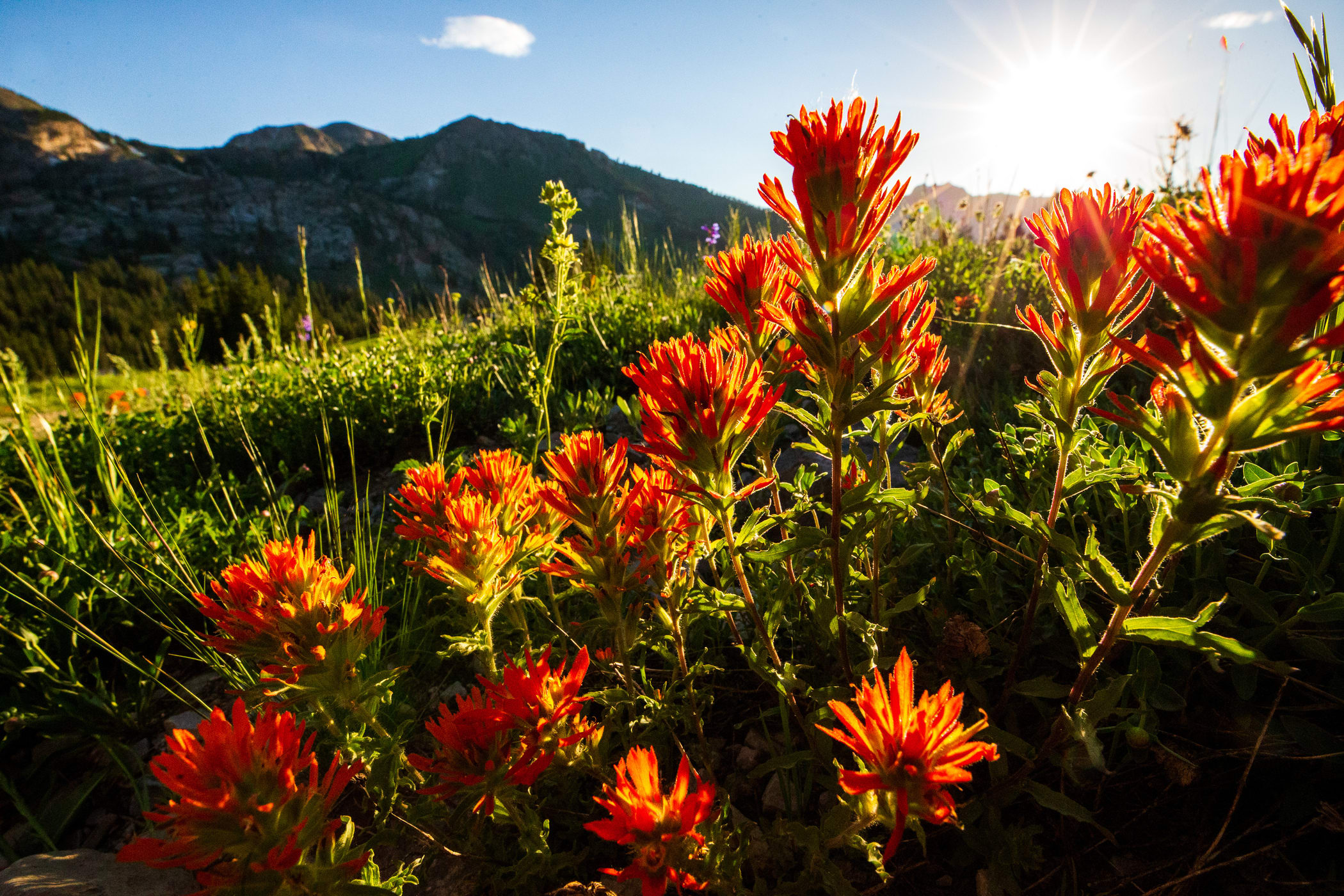
Peak season: July & August
A few different paintbrush species can be found within Alta that encompass a wide range of colors from red, to pink, to orange to pale white. One of the most common paintbrush species within Alta is the Wyoming paintbrush, which is most often scarlet or red-orange in color. Linear leaves subtend the torch-like spikes of showy, bright-red bracts. If you peer more closely, these bracts are hiding small, green flower tubes. - Alta Environmental Center
SINGLE-hEAD sUNFLOWER
Helianthus uniflora
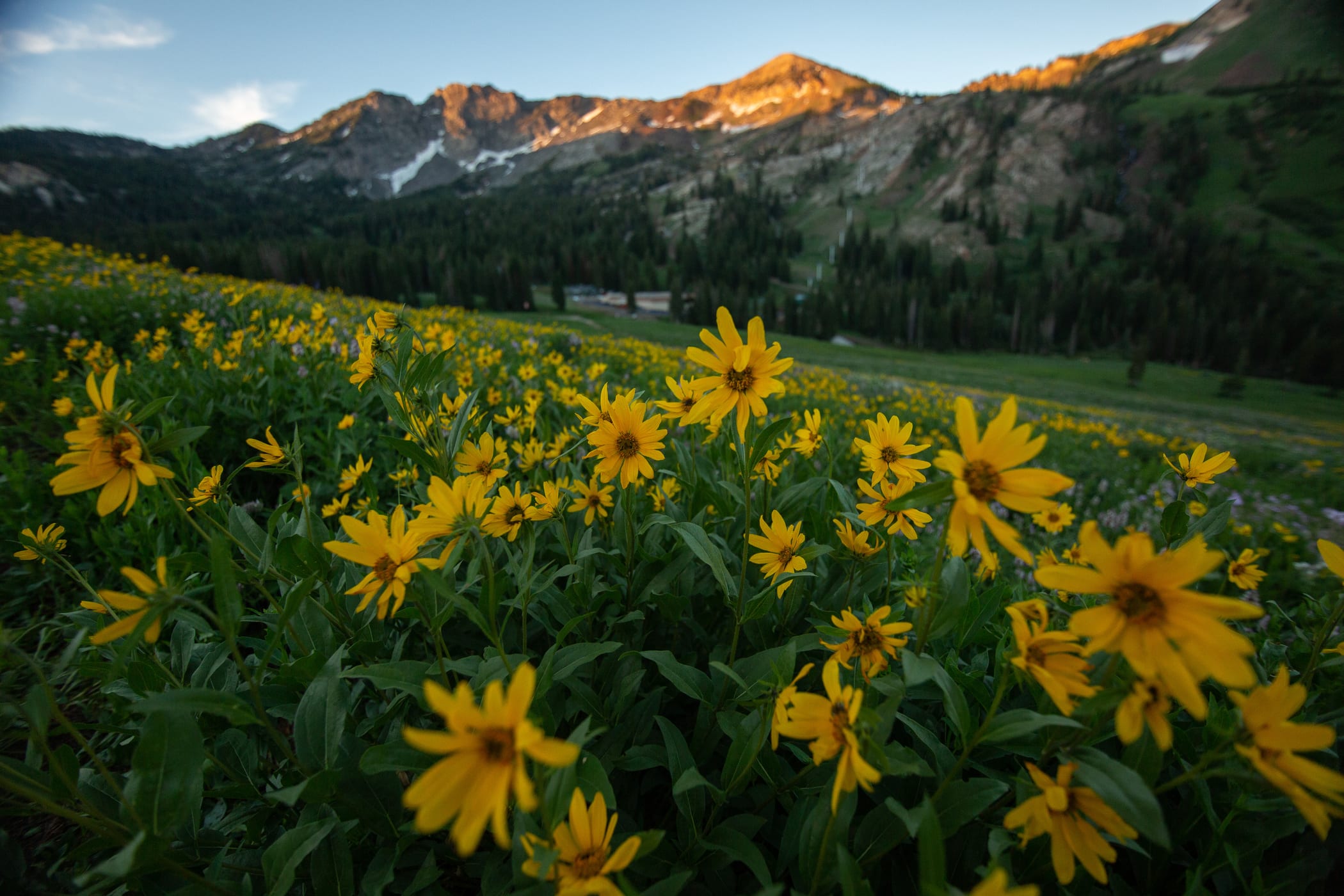
Peak season: July–September
One can distinguish this species from Showy Goldeneye by counting the number of flowerheads per stem. True to its name, Single-Head Sunflower has only one flower per stem, while Showy Goldeneye has up to five flowers per stem. This showy flower is an important pollen source for a variety of bees. Also known as Oneflower Helianthella and Little Sunflower. - Cottonwood Canyons Foundation
Pearly Everlasting
Anaphalis margaritacea
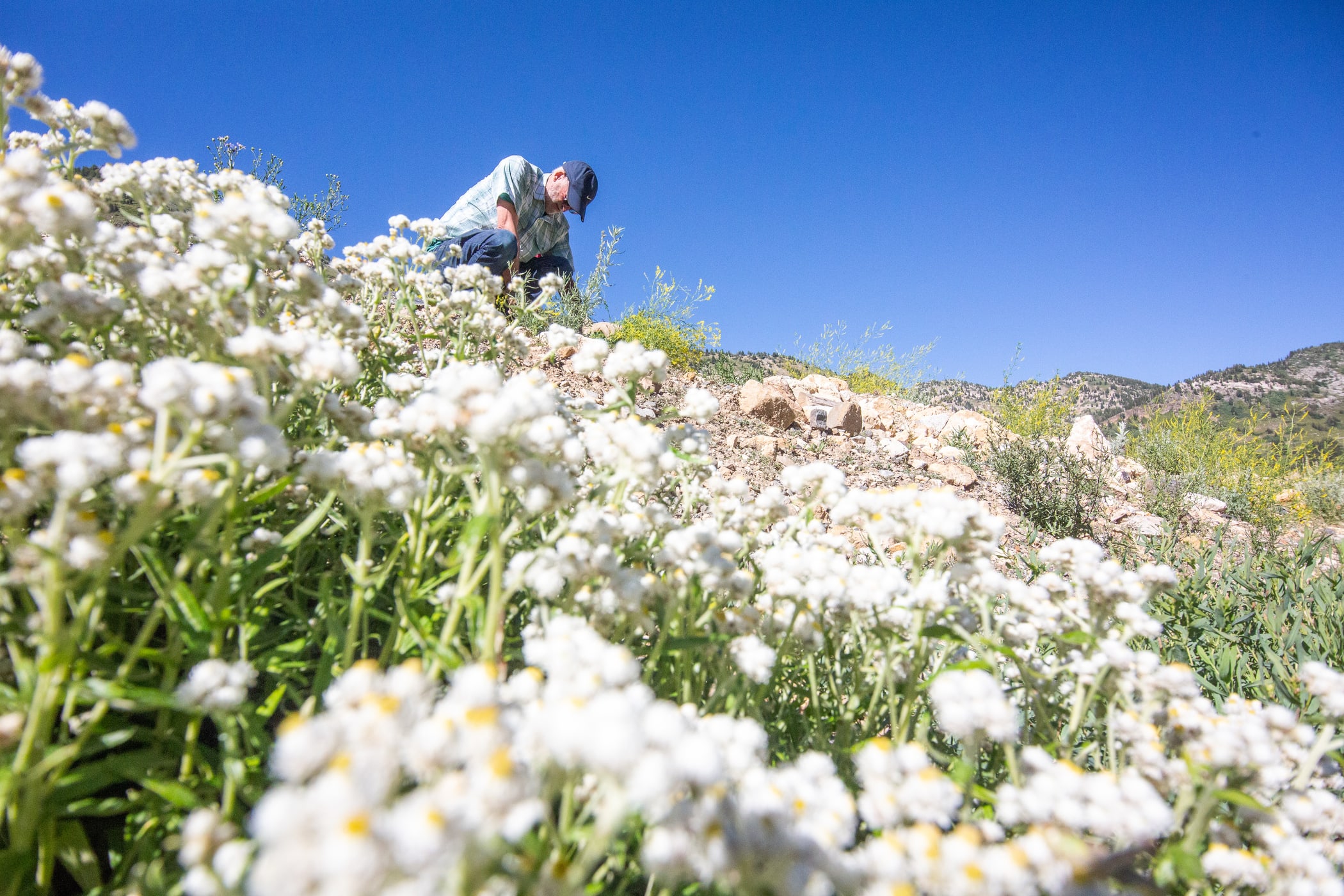
Peak season: June–August
Find Pearly Everlasting blooms scattered across rocky meadows, aspen and evergreen groves or along stream beds. It is a drought-tolerant plant that is a member of the aster family. Pearly Everlasting flowers form dense clusters of white blooms with a bright yellow center. The grey/green stems are densely covered in wooly white hairs and the lance-like leaves will also feature fuzzy undersides. The blooms give off a slight odor of musk and they are often used as host plants for butterfly eggs and larvae. This plant earns the name "everlasting" because its stark white bracts persist long after the flower has dried up. - Cottonwoods Canyon Foundation
Fireweed
Chamerion angustifolium var. circumvagum
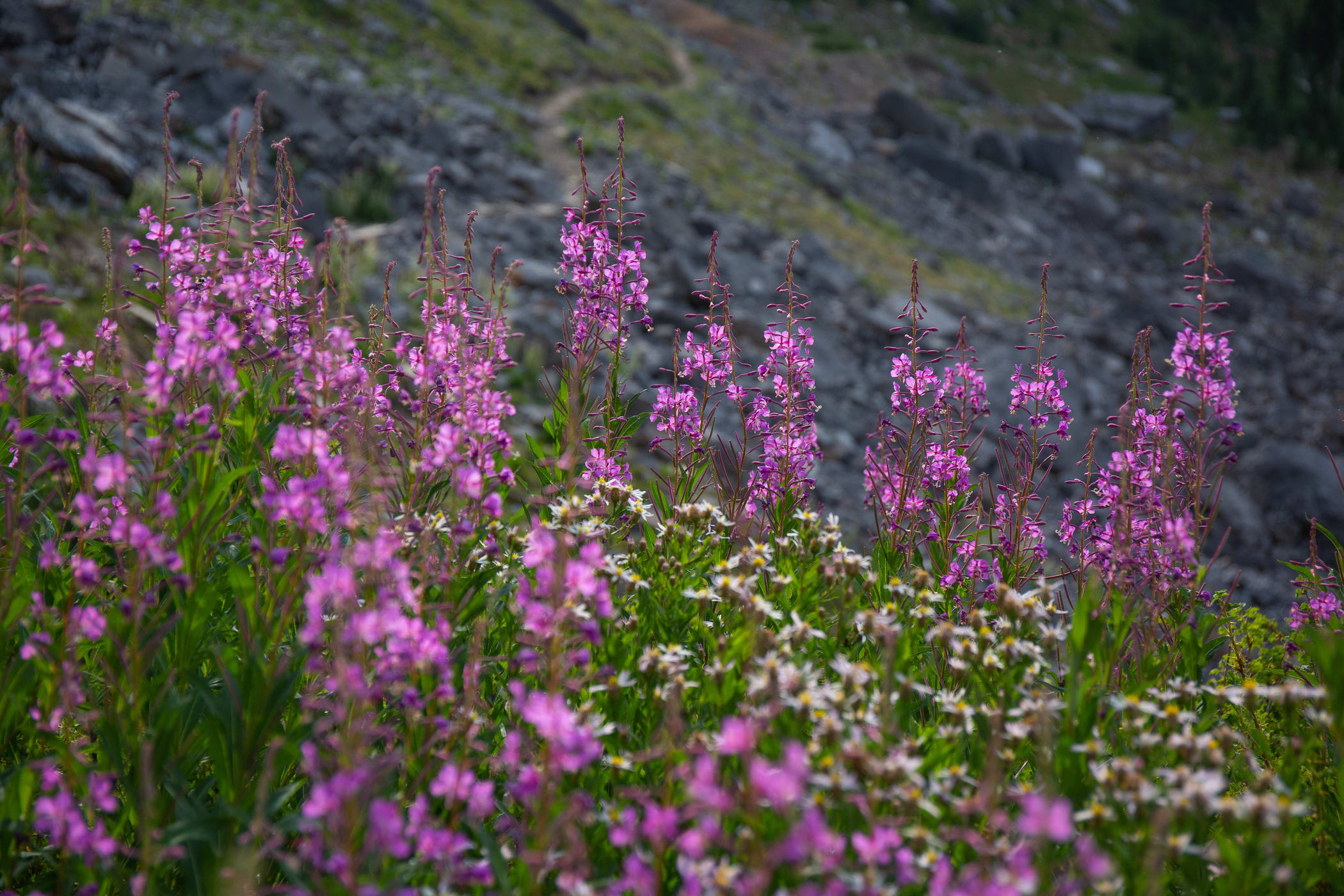
Peak season: July–September
The name "Fireweed" comes from the wildflower's swift ability to colonize areas following a fire or ecological disturbance. In Oregon, it was one of the first plants to re-establish itself after Mount Saint Helens erupted, turning the barren landscape into fields of pink. That brilliant magenta hue is what makes Fireweed simple to identify. The 3-5-foot plant grows in groups and thrives in open meadows, along streams, roadsides, forest edges or areas of recent disturbance. Fifty or more blooms adorn the top of each stem from June through late summer. At summer's end, the stems will bear long, cylindrical capsules that release hundreds of silky seeds. A single Fireweed plan can produce up to 80,000 seeds! Skiers rejoice at the sight of Fireweed's fluffy seeds, as an old saying goes "When Fireweed turns to cotton, summer will soon be forgotten." - Cottonwood Canyons Foundation
Silvery Lupine
Lupinus argenteus

Peak season: June-August
Lupines, though poisonous to livestock, are beneficial nitrogen-fixers, meaning they take nitrogen from the atmosphere and deposit it into the soil. The plant is also an important food source for butterflies and hummingbirds. Silvery Lupine is a member of the pea family and the pea-like flowers crowning this bloom range from violet to pink and, in rare cases, white. Lupine quickly spreads to establish colonies of plants with hairy stems 1—2 feet tall. Lupine is prominent in Alta's meadows and can also be found along roadsides and wooded areas up to 10,500 feet in elevation. - Cottonwood Canyons Foundation
Aspen Fleabane
Erigeron Speciosus
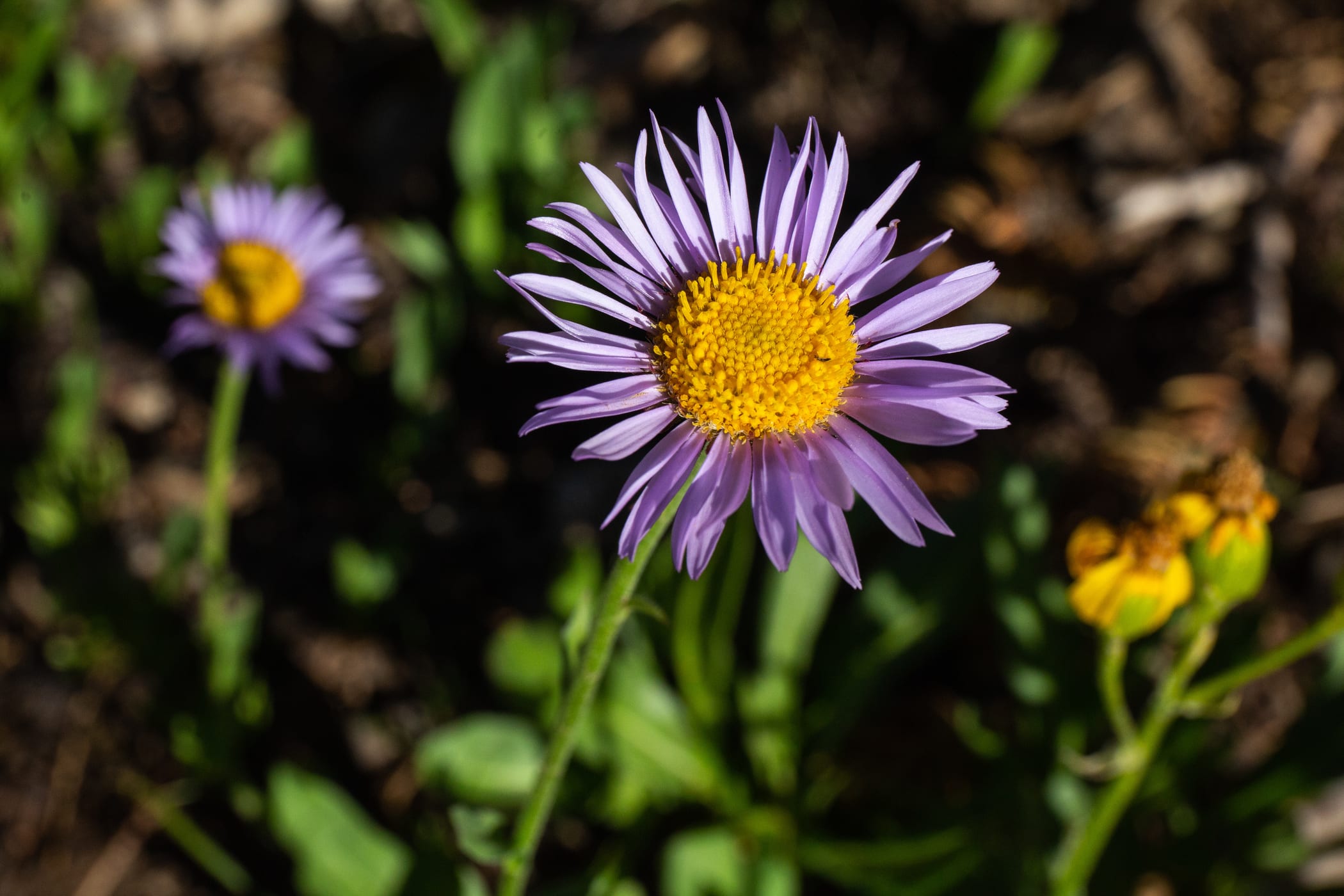
Peak season: July–October
The Aspen or Showy Fleabane has a wide distribution across the western United States and commonly grows in open woodlands, thickets, meadows and forest clearings with rocky or gravelly soil. Plants are 1—2 feet tall with woody steams bearing several daisy-like, purple blooms surrounding a golden yellow disc. This species has a showy flowerhead that lends credence to its species name "specious," which means good-looking, handsome, or beautiful in Latin. - Cottonwoods Canyon Foundation
Sticky Purple Geranium
Geranium viscosissimum
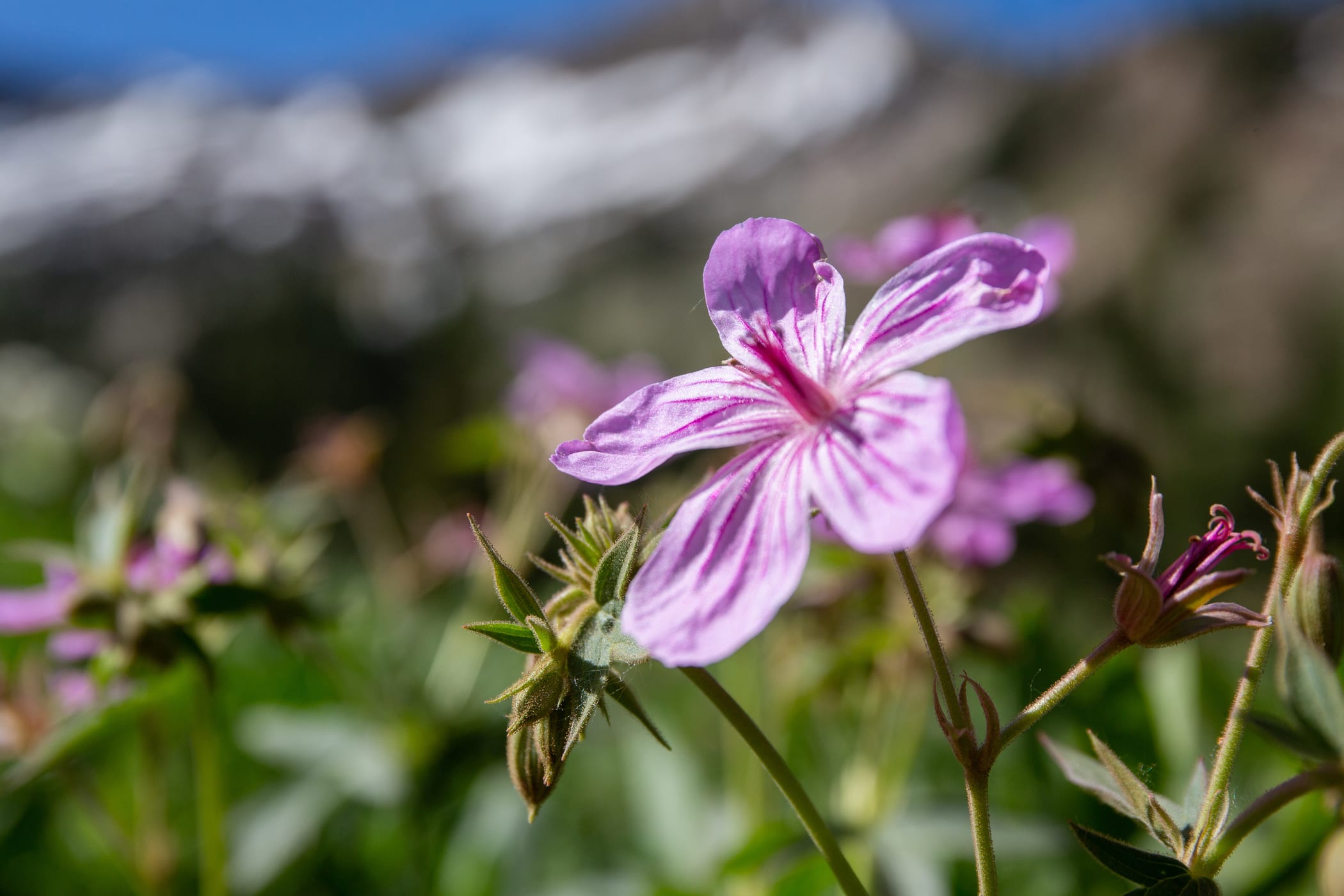
Peak season: June–August
You'll find Sticky Geranium in profusion in the meadows of Albion Basin in the early summer months. The blossoms tend to wilt in the heat of August but the leaves turn red in the fall for a showstopping sight. A favorite of pollinators, the Sticky Geranium features clusters of flowers with five pink, lavender or magenta petals that sport darker veins. The stem, leaves and flower stalks are densely covered with sticky hairs. This bloom can be found in foothills, canyons, open woodlands and meadows.
Richardson's Geranium
Geranium richardsonii

Peak season: June–August
Richardson's Geranium, or White Crane's Bill, is named for its curved seed pods that resemble the beak of a crane. The genus Geranium hails from the Greek work geranos which means "crane." This particular species is named after Sir John Richardson (1787–1865), an arctic explorer and naturalist. The white, saucer-shaped flowers tend to bloom in late spring and early summer. The leaves, which somewhat resemble those of a maple tree, will turn a brilliant red in autumn. The Richardson's Geranium is most commonly found in moist areas like woodlands, forest edges, meadows, stream terraces and riparian areas.
Elephant's Head Lousewort
Pedicularis groenlandica
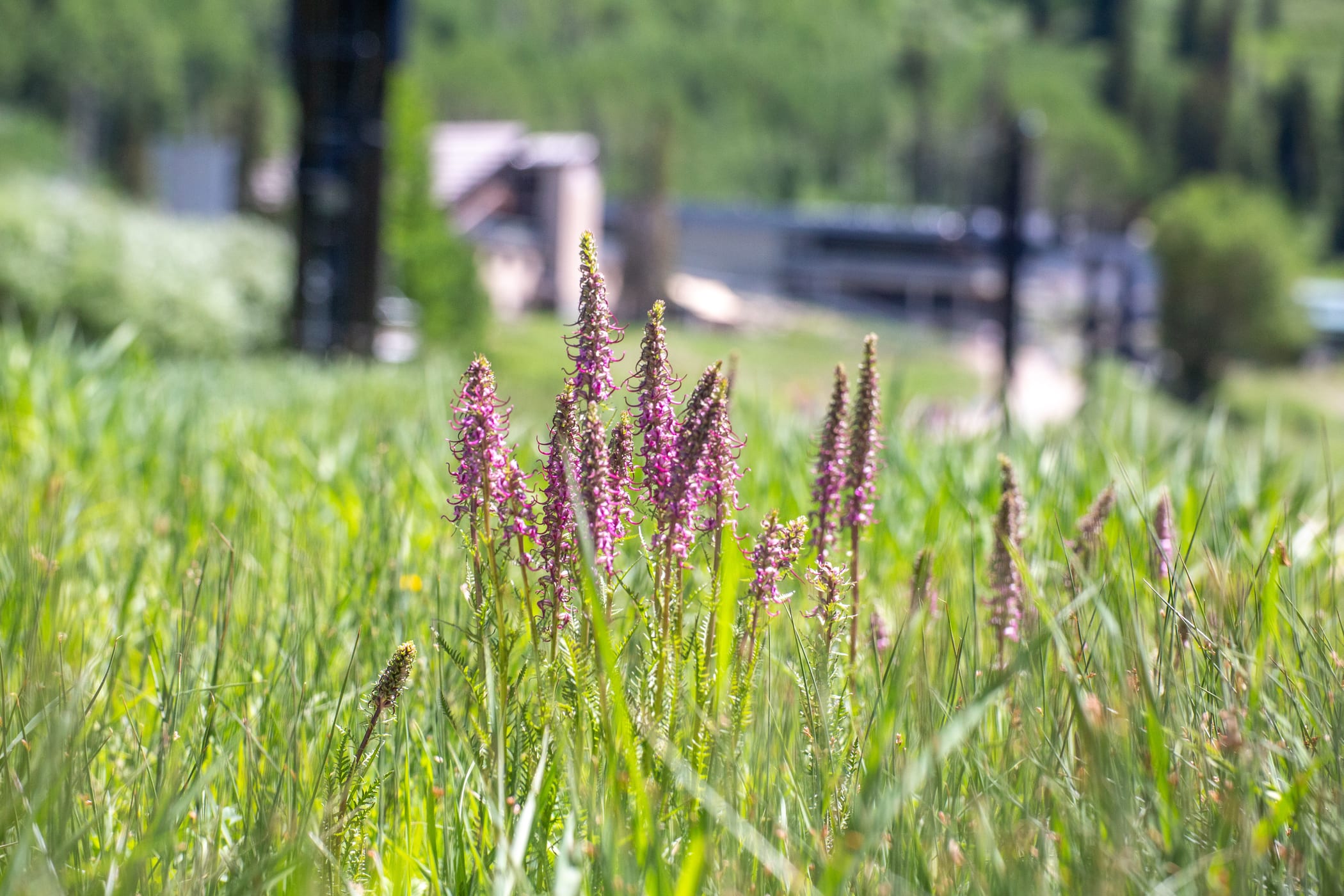
Peak season: June–August
Instantly recognizable, the delicate, magenta or purple flowers of this species distinctly resemble the shape of an elephant’s face, ears and trunk. Shortly after snowmelt this plant's fern-like leaves will emerge in damp, boggy areas, around beaver ponds, meadows or along streambeds and lake shores. Stems are singular though often clustered together, varying in height. The Elephant's Head blooms in early June through early August, depending on elevation. This unique flower occurs at higher elevations from 7,400 feet to above timberline. The name Pendicularis derives from the Latin word for louse. There was an old superstition that eating these plants increased lice on cattle.
Wasatch Penstemon
Penstemon cyananthus
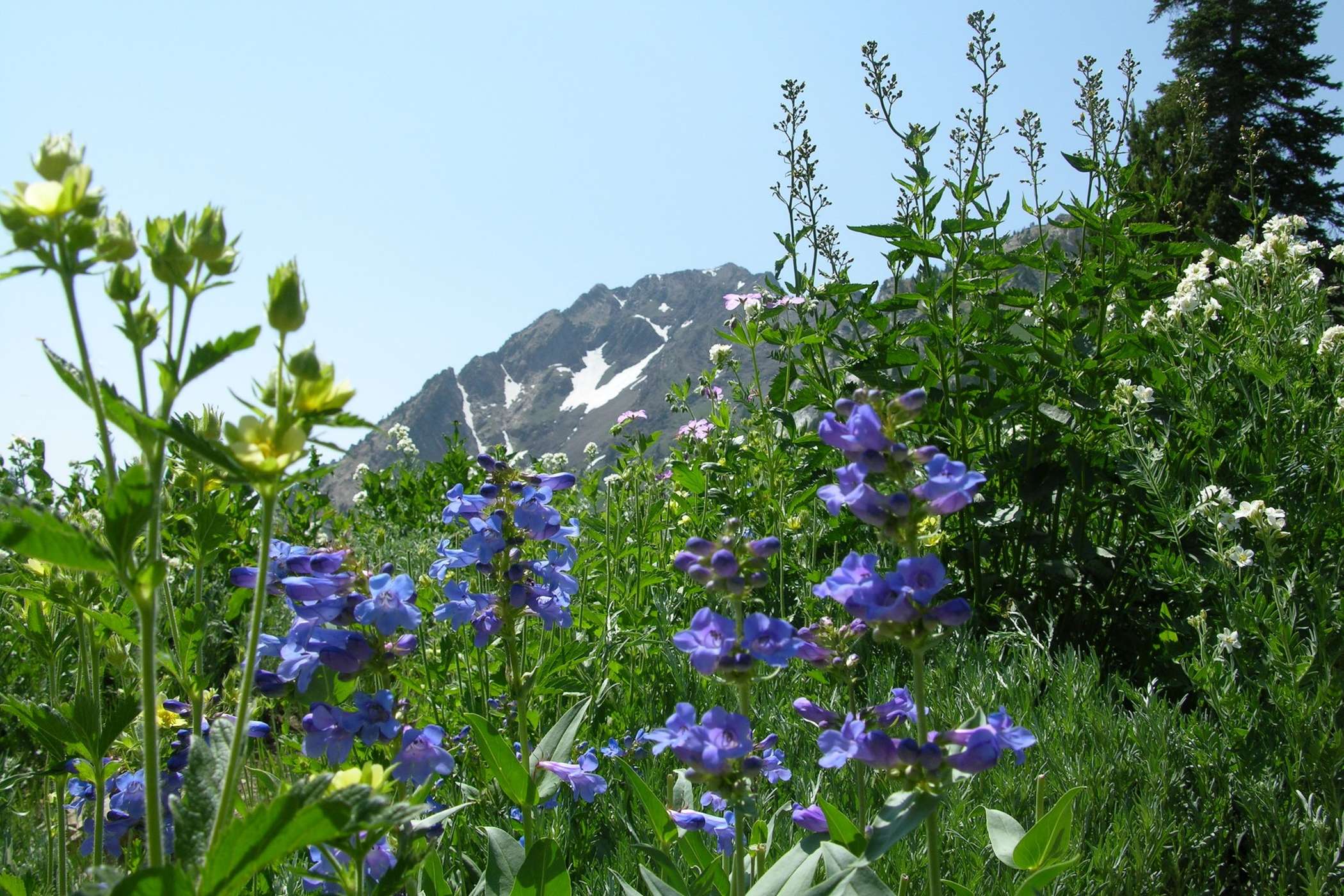
Peak season: June
There are over 100 species of penstemon native to Utah and they serve as an important source of nectar for insects and hummingbirds. Wasatch penstemon—also known as Wasatch Beardtongue—are drought tolerant and prefer open slopes, aspen stands, meadows and foothills. The deep blue or purple blooms erupt in showy clusters along stalks with leafy stems. The flowers somewhat resemble snapdragons and measure approx. 1 inch in size, growing in distinct rings around the stem.
Rocky Mountain Columbine
Aquilegia coerulea
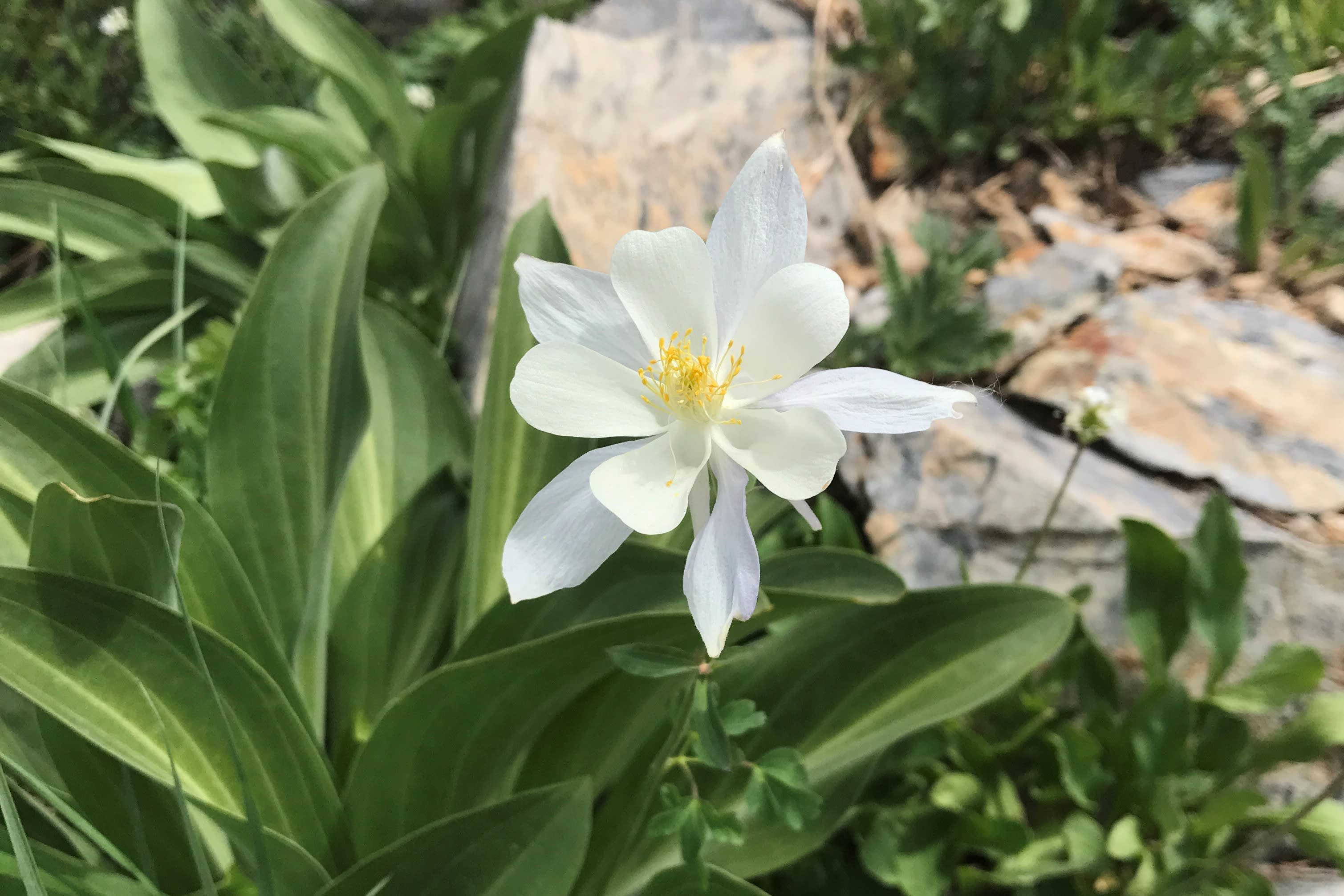
Peak season: June & July
Look for this recognizable bloom in early to mid-summer among meadows, groves of aspen or sagebrush, alpine tundra or coniferous forests. Blooms can vary from white, blue, to coral red, and yellow as their color is determined by the acidity of the soil. Pale blue or yellow hues indicate a basic PH while darker colors indicate more acidic soils. The bloom is suspended above the fern-like foliage. Look for 5 creamy or white wing-shaped sepals and 5 tube-shaped petals that drift backwards away from the sepals. Butterflies and hummingbirds are often found near these flowers. The columbine is a favorite of wildflower enthusiasts and photographers and it serves as the State Flower of Colorado.
Alpine Jacob's Ladder
Polemonium foliosissimum var. alpinum
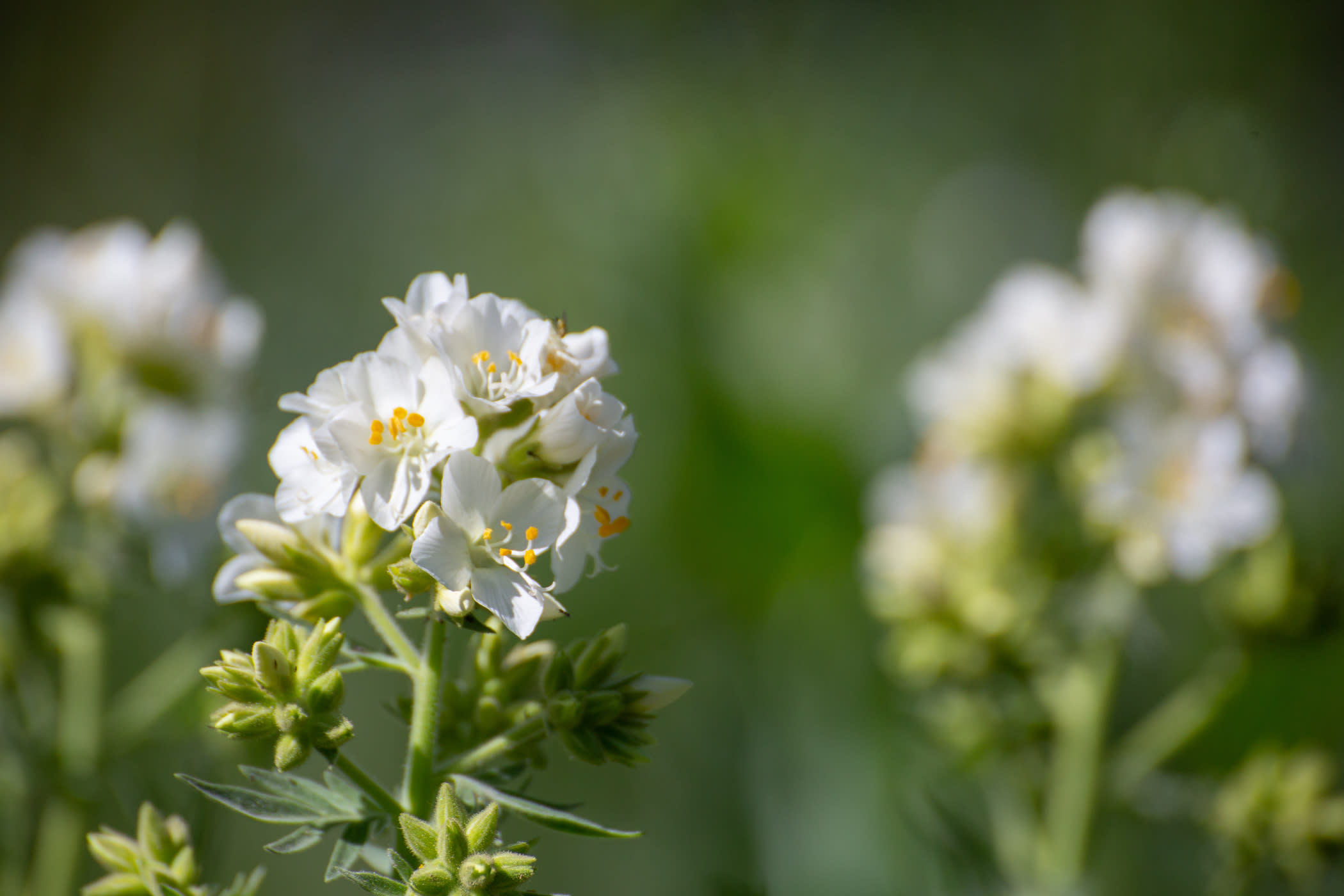
Peak season: June–August
Alpine Jacob's Ladder or White Jacob's Ladder is a member of the phlox family and it is an herb native to Utah. Look for 5 white, rounded or lobed petals, long stamens and golden yellow anthers. The large leaves somewhat resemble ladders, which is how this species earned its common name. Though somewhat rare in occurrence, Jacob's Ladder can be found in aspen and high meadow communities blooming throughout the summer. The white flowers and height of this species distinguish it from other members of this genre.
Cow Parsnip
Heracleum maximum
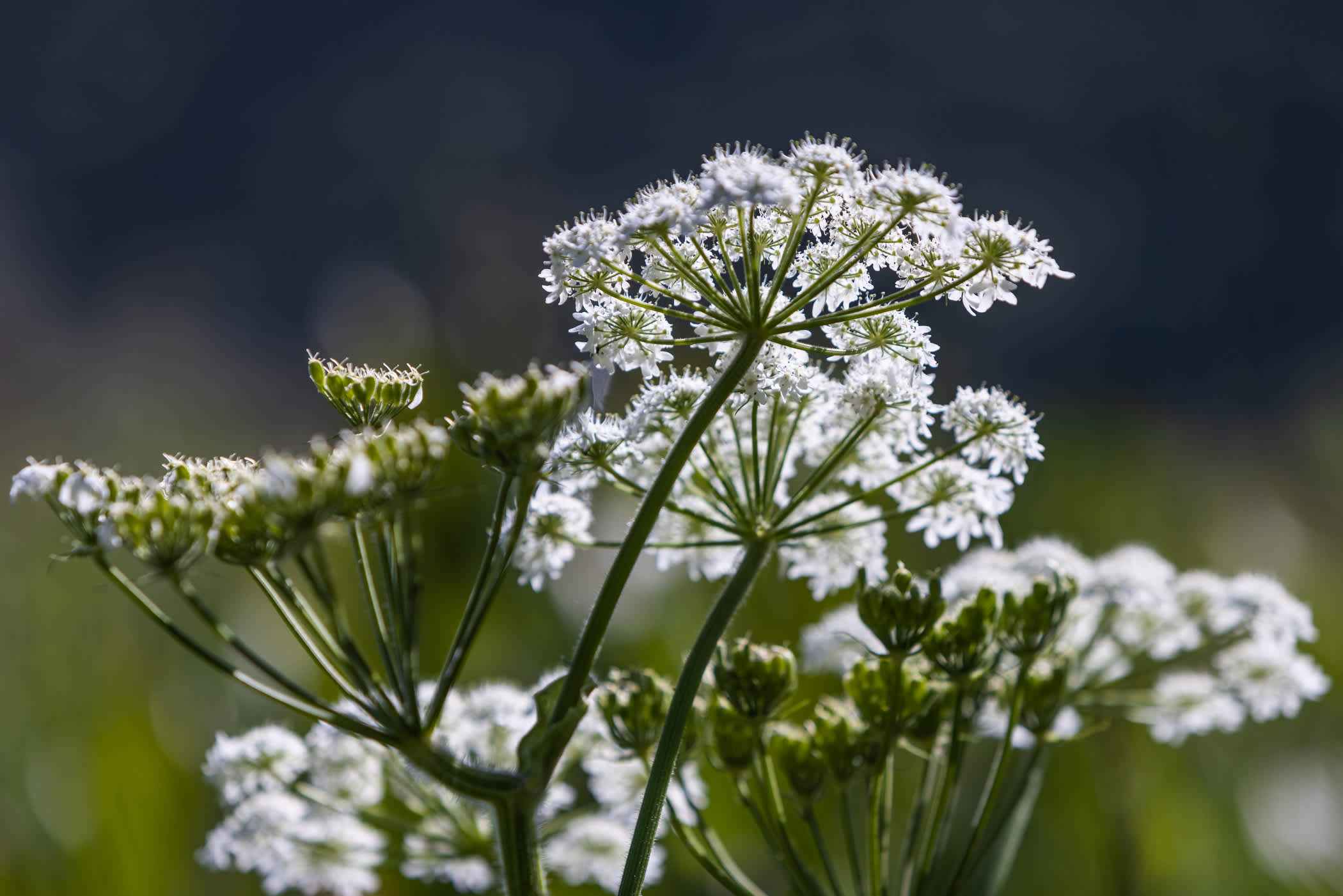
Peak season: July–August
Cow Parsnip is a large member of the carrot family that can grow up to 10 feet in height. The hollow stems are densely covered in fine hair and support leaves up to 16 inches in width. Distinct flowers crown the plant in flat clusters (umbels) that can reach 4-8 inches in width. Each umbel is composed of a cluster of up to 30 white flowers. This plant serves as valuable forage for cows, sheep and goats, hence its common name. Phytotoxic chemicals in the plant may cause skin irritation for some individuals, causing rashes burns or blistering in severe cases.
Additional resources
- Wildflowers of the Wasatch | Cottonwood Canyons Foundation
- Stay Wild: The 10 Most Common Wildflowers in the Wasatch | Ski Utah
- Utah Rare Plant Guide | UtahRarePlants.org
- View the Albion Basin Plant Checklist | US Forest Service
The common plant names in this article link to descriptions from the Wildflower.org database. The flower ID photos are from Alta photographer Rocko Menzyk. We have also included plant descriptions borrowed from the Alta Environmental Center, Lexi Dowdall of Ski Utah and Tim Remkes of the Cottonwood Canyons Foundation.
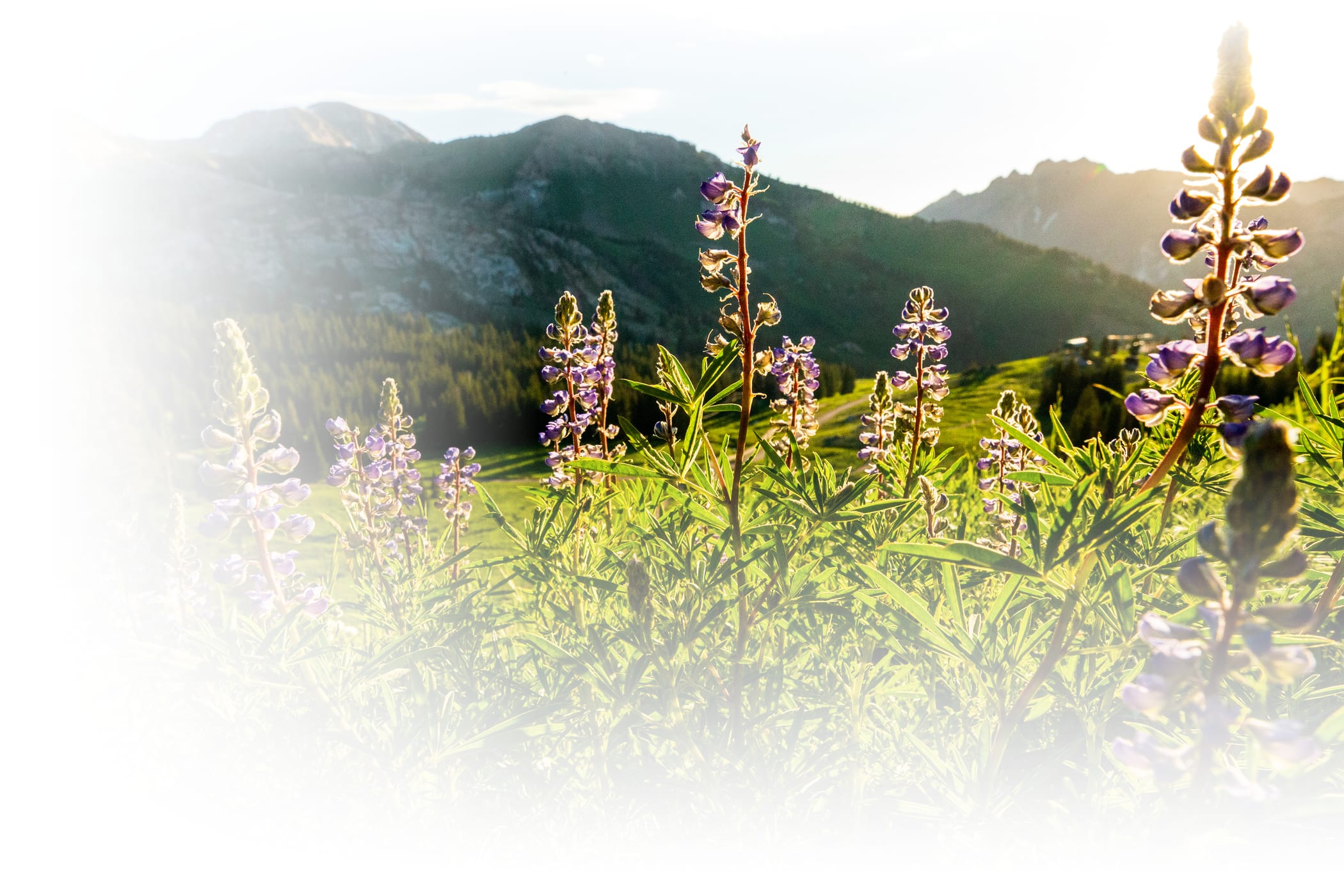
Add Your Comment